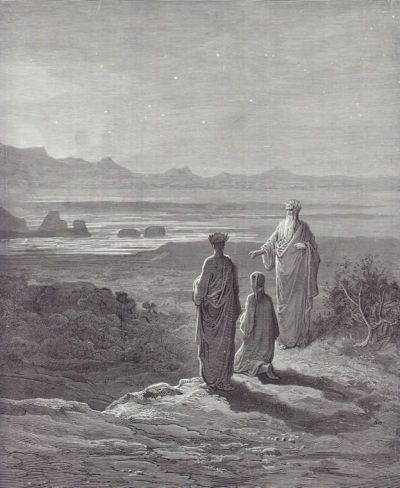L'articolo tratta della vita di Marcus Porcius Cato Uticensis, uno dei senatori romani nel 95 d.C. È ancora noto come storico della famiglia degli imperatori. Uno stoico romano è qualcuno che fu nobile ed ebbe molte ricchezze ma visse una vita modesta. Durante le guerre, Cato mangiò lo stesso cibo dei suoi soldati e dormì negli stessi alloggi. Dopo questa guerra Cato si suicidò. La storia di Cato continuò nella Divina Commedia quando Dante incontrò lui nel Purgatorio e fu a guardia della porta. Cato non fu all'Inferno dove trovò le anime dei suicidi. Dante spiegò che l'animo di Cato fu sempre fedele al Senato romano ed ebbe sempre una patria forte.
Remember the story of Nathan Hale? During the American Revolution, he was hanged by the British as a spy. Imagine the scene of this brave patriot. Surrounded by Redcoats, he stands tall with his chest out, hands tied behind his back, from his neck hangs a placard with the words “Rebel Spy.” As they put his head in the noose, he boldly says, “I regret that I have but one life to give to my country.” You gotta give the guy credit. To come up with a line like that as you are facing death takes a special kind of person. It doesn’t diminish his courage to know that the line was plagiarized, well, not plagiarized as much as paraphrased.
One of the most popular plays of the 18th century was Joseph Addison’s play, “Cato”, based on the life of Cato the Younger, who opposed Caesar’s takeover of the Republic. In the play, Addison has Cato say, “How beautiful is death when earn’d by virtue/Who would not be that youth? What pity it is/That we can die but once to serve our country.” Considering the play’s popularity, it likely inspired Hale’s famous line.
The play was well-liked across the political spectrum, from the American Patriots to both major political parties in Britain, the Whigs and the Tories. Even George Washington was a fan of the play. Washington was so taken with the character of Cato that he saw the Italian (Roman) as his role model and had the play performed at Valley Forge. This, of course, begs the question, who is Cato? Why should Washington, a man dedicated to individual liberty, be so enthralled with someone who had lived 1,800 years before the American Revolution? And that is just it; Cato is the patron saint of republicanism (note the small-r).
Marcus Porcius Cato Uticensis was born into a very old Roman senatorial family in 95 B.C.E. At times, he is referred to as Cato the Younger or simply Cato. He should not be confused with his grandfather, Cato the Elder, a Roman censor who advocated the destruction of Carthage at the end of the Punic Wars. When Cato the Younger was just 14, he asked why no one stopped the illegal actions of the dictator Lucius Cornelius Sulla. He was told people feared Sulla more than they hated him. Cato replied, “Give me a sword that I might free my country from slavery.” After that, his family kept a very close eye on him when they were in Rome.
Like Marcus Aurelius, who came centuries later, Cato practiced stoicism, living modestly although he had great wealth. Given military command at an early age, Cato marched with his men, ate the same food they ate, and slept in the same quarters in which they slept. As a politician, he did something truly remarkable; he built a reputation of incorruptibility. As mentioned, when Julius Caesar declared war on the Roman Senate, Cato stood against him to preserve the Roman Republic. When Caesar defeated the Senate’s army, Cato retreated to Utica, where he committed suicide.
In addition to Addison’s play, Cato tends to pop up in some of the most unlikeliest places. Most curious is the role given to him by Dante in “The Divine Comedy”. Suicides, according to Dante, are in the second subcircle of the seventh circle of hell. The spirits of the suicides are in the trees and shrubberies of a pathless wood where harpies make their nests. But this is not where we find Cato. He isn’t even in hell despite being a pagan. Rather, he is the guardian of the island of Purgatory, meeting the souls on the island’s shore as they begin their journey toward heaven.
Dante describes Cato when he first sees the Roman as having a face that shines as the Sun with the light of four stars. These four stars represent the four cardinal virtues, wisdom, justice, courage, and temperance, also known as the four pillars of stoicism. Ancient and medieval writers have long described Cato as perfectly possessing these virtues, making him the embodiment of virtue. Still, it is valid to ask, even with these virtues, why is he not in the seventh circle of hell with the other suicides. Cato is different from the souls Dante encounters in hell. Cato did not act out of cowardice or self-interest. He knew that if he were to live, Caesar would use him as a propaganda tool against the Republic, which could result in further bloodshed. Instead, Cato offered himself as a sacrifice for his country, surrendering his life as a bulwark against tyranny.
According to Dante, Purgatory is a place where souls are freed from the chains of sin. In making Cato the guardian of Purgatory, Dante makes Cato what he was in life: the guardian of liberty. As with so many Italians, he was a role model to the American Founders, providing inspiration as they defined our national values.
Marcus Porcius Cato Uticensis a truly great Italian (Roman).

Cato the Younger



